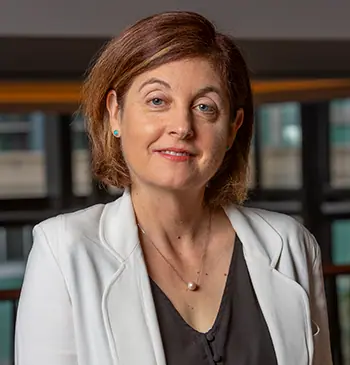
Banks Grapple With Succession Planning
 Like other banks, U.S. Bancorp has an emergency succession plan for its CEO and other critical jobs at the senior executive level. Jennie Carlson, executive vice president for human resources, prefers to call it the “win the lottery” plan, rather than the “got hit by a bus” plan. It just sounds better. The plan identifies who could take over temporarily if something happened to that executive.
Like other banks, U.S. Bancorp has an emergency succession plan for its CEO and other critical jobs at the senior executive level. Jennie Carlson, executive vice president for human resources, prefers to call it the “win the lottery” plan, rather than the “got hit by a bus” plan. It just sounds better. The plan identifies who could take over temporarily if something happened to that executive.
The Minneapolis-based $416 billion asset company, whose subsidiary is U.S. Bank, also has a long-term succession plan, where potential successors for the CEO suite are developed internally and where their responsibilities are progressively increased over time as their skills and abilities are assessed by current CEO Richard Davis and the board. Banking is not rocket science. But the soft skills are hard to teach, Carlson said at Bank Director’s Bank Executive and Board Compensation Conference last week in Chicago. “What we can’t teach is intellectual curiosity, balanced risk management, loyalty and commitment,’’ she said. “That’s what we’re looking for in successor candidates.”
This process is exactly what the bank used when it hired Davis. He had been a line of business manager, and was steadily promoted to a series of bigger jobs at the organization. Succession planning is a transparent process for U.S. Bancorp. Although Carlson said she doesn’t want to encourage a horse race, the candidates know they are in the running for the CEO job, and that they are being given increased opportunities and responsibilities as they learn about the job, the board, and other parts of the company that they aren’t familiar with. The bank prefers to hire from a list of internal candidates, although it does keep track of external possibilities, she said.
Another bank that prefers to hire for the C-suite internally is $2.2 billion asset Souderton-based Univest Corp. of Pennsylvania. CEO Bill Aichele said during a panel discussion at the conference that he retired last year after a lengthy succession plan. The chief financial officer become the new CEO after several years of planning and promoting him. Another individual who was in the running to succeed Aichele was not chosen after 22 years with Univest. He subsequently left the company. “The board made the tough decision based on the skills sets and the ability to succeed me and lead the company,’’ Aichele said. He said the bank continues to work proactively to train and promote internally for the top leadership roles. One employee is getting his executive management courses at a local college paid for by the bank, at a cost of $15,000. Good succession planning, he said, takes careful planning “and yes, a big investment in education.”
Regulators have the greatest interest in a bank’s emergency succession plan, said Don Norman, a partner at Chicago law firm Barack Ferrazzano. “This is about keeping the doors open,’’ he said. Banks should create a document listing three to five critical positions, with candidates for each one. But he has seen one bank come up with a list of 40 positions and potential emergency candidates for each one, and there is no reason why you shouldn’t come up with a list based on your own needs. Banks should consider questions of potential candidates: What are their skill sets? Do they have the ability to immediately step in?
You may not have the same candidates in an emergency plan as in a long-term plan. During an emergency, you might have to use a retired CEO, for example, which is not the candidate for your long-term succession plan. For longer term plans, what’s your action list or timeline? How will this process tie into management development programs? Who owns the process? Normally, the governance committee works with the CEO to develop candidates. How often should your plan be updated? What are the pay considerations? Contracts will need to be signed to incentivize your candidates to stay with your company, perhaps with stock that vests over time.
Banks may eventually find that younger generations have different needs when it comes to succession planning. Carlson expects millennials to change the process from previous generations. (Millennials are the 80 million or so people in their late teens to early 30s.) She says they generally want to know their potential career paths and what they should do to further their career goals. Hiring managers will have to be clear and explicit with this next generation. “Baby boomers were willing to have unspoken promises,’’ she said. “Millennials aren’t going to do that.”
For more on succession planning, see “Getting Succession Planning Right” in the June Talent issue of Bank Director digital magazine, available as an app for your tablet or phone at no charge.


